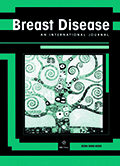Authors: Ferre, Romuald | Ghorab, Zeina | Alikhassi, Afsaneh | Curpen, Belinda
Article Type:
Case Report
Abstract:
Tuberculosis (TB) remains in 2022 a significant public health issue as it remains endemic in some areas of the globe, with a high prevalence in underdeveloped countries (Pujani, Khan, Hassan, Jetley, Raina, Breast Dis. , 35(3): 195–198, 2015. doi:10.3233/BD-150405 . PMID: 26406543). Pulmonary TB is the most common form, but TB can also have extrapulmonary manifestations like tubercular lymphadenopathy. Tuberculous lymphadenitis is the most extrapulmonary tuberculosis. It used to be called scrofula in the past coming from the Latin meaning breeding sow (Kokosali, Lloyd, Dent Update , 33(5): 306–308, 311, 2006. doi:10.12968/denu.2006.33.5.306 . PMID: 16841612; Oberhelman, Watchmaker, Phillips, JAMA Dermatol , 155(5):
…610, 2019. doi:10.1001/jamadermatol.2018.5651 . PMID: 30942835). It is a common cause of peripheral lymphadenitis, seen mostly in the developing countries, but also reemerging among intravenous drugs users and immunocompromised population. Cervical nodes are the most commonly detected nodes in tuberculous lymphadenitis, accounting for 63% of the cases, followed by mediastinal (27%) and axillary nodes (8%) (Ahuja, Ying, Evans, King, Metreweli, Clin Radiol , 50(6): 391–395, 1995. doi:10.1016/s0009-9260(05)83136-8 . PMID: 7789023). Tuberculous lymphadenitis affects predominantly the young population and children. There is also a slight female predilection. As to our knowledge, there have not been any reported cases as post-menopausal axillary tuberculous lymphadenitis, and it is the focus of this article.
Show more
Keywords: Breast cancer, tubercular lymphadenitis, mammography, ultrasound, tuberculosis, axillary lymphadenopathy
DOI: 10.3233/BD-220015
Citation: Breast Disease,
vol. 41, no. 1, pp. 529-534, 2022
Price: EUR 27.50





